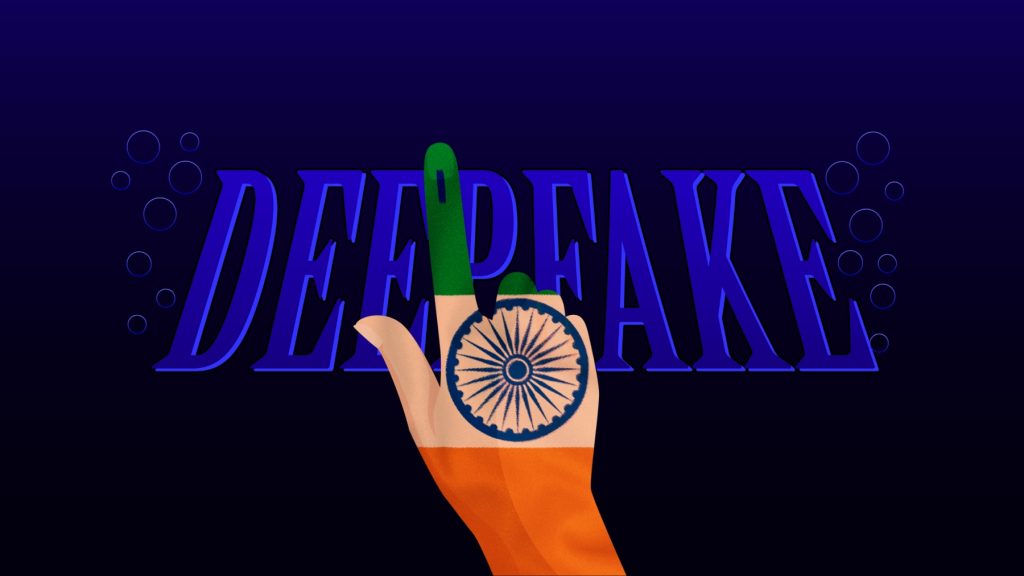
Elections in India have been taking place since the 19th of April and will stay in effect till the 24th of June. But this year, there’s a new twist, the rise of AI in 2024 has driven Indians to fall victims to deepfakes regarding the elections.
The Indian territory is starting to get ready to head to the polls, and with the emergence of deepfakes in the past year, it is quite understandable why it is a tad bit impossible to avoid the large fake generated images and videos along with personalized messages in a large range of Indian languages. It does not end here but Indians have taken a further step and generated automated calls make to target the voters in different candidate’s voices.
A Phenomenon with Global Reach
India’s political parties aren’t the first to globally indulge in AI technologies.
In Pakistan, this AI technology allowed a jailed leader Imran Khan to speak at a gathering. Similarly, in India, Prime Minister Narendra Modi has worked on this emergent tech for an efficient campaign, in which he delivered speeches in Hindi that were simultaneously translated into Tamil using the government-developed AI tool, Bhashini. However, this technology also holds potential for manipulating language and messages.
Same as always, the citizens are the victims.
During the critical period of elections in India that is taking place, AI is a rise and so are the cyberattacks. This might be coincidental, or even planned, since the country is at a critical period.
In the first quarter of 2024, cyberattacks impacted a significant number of internet users in India, with 20% experiencing cyber threats. About 22.9% faced web-based attacks, while 20.1% were susceptible to local threats within the same timeframe.
The most common sources of web threats were browser and social media exploits, where cybercriminals manipulated browser weaknesses and their extensions, according to research by Kaspersky.
Attackers increasingly use file-less malware, which allows legitimate application tools to infiltrate systems and perform cyberattacks. This type of threat, not requiring users to download malicious files, emerged as one of the most perilous during the first quarter of 2024.
“Malware remains a major threat to the users in India. Targeted malware attacks continue to be a major source of worry for organizations and users alike. Stealth threats and the exploitation of user vulnerabilities are seen to plague the systems of the users in India”, stated Purshottam Bhatia, Head of Sales, Consumer Solutions, South Asia, Kaspersky said.
Should foreign interference occur, who other than the United States could unite forces to combat the threats facing India? After all, the US is putting its hopes in making India the new Chinese manufacturing country for the American empire.
The American Effect
It is quite strange that the US has not deployed their technology to detect deepfakes to their beloved India. India has currently replaced China in manufacturing of electronics such as Apple products for the US. Microsoft and OpenAI worked on a project to hinder the spread of deepfakes in the 2024 elections for the sake of not being able to “deceive the voters and undermine democracy.”
Even with the potential dangers, elections in India initially stated it had no plans to enact AI legislation. Yet, this March, the country swiftly moved to consider regulations following an uproar caused by Google’s Gemini chatbot, which was responding to the question: “Is Modi a fascist?”
Unlike in the US, when Indians asked Gemini an election-related question, it would respond. In the US, Gemini was not allowed to take such actions, and it would direct users to Google’s home page.
2024 is the year of elections, let all countries join hands for the safety of their citizens, so they can make the right decision when it comes to voting.
Inside Telecom provides you with an extensive list of content covering all aspects of the tech industry. Keep an eye on our Intelligent Tech sections to stay informed and up-to-date with our daily articles.